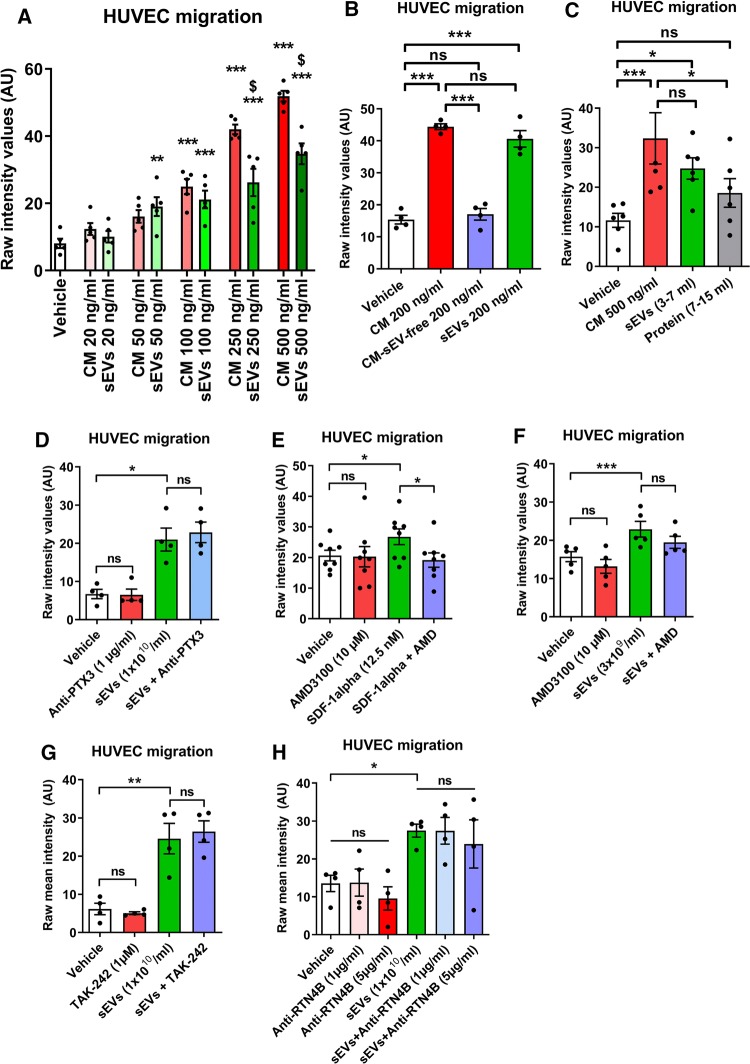Fig. 7.
Comparison of the promigratory effects of SS-hAFSC-conditioned medium and isolated SS-hAFSC sEVs and the mediators of these effects in the vesicular cargo. a HUVEC migration in response to SS-hAFSC-conditioned medium (CM) or isolated SS-hAFSC sEVs. **p < 0.01 vs Vehicle, ***p < 0.001 vs Vehicle, $ p < 0.001 vs CM (respective dose), one-way repeated-measures ANOVA with Tukey’s post hoc test. n = 5. b HUVEC migration in response to SS-hAFSC-conditioned medium (CM), SS-hAFSC-conditioned medium depleted of sEVs (CM-sEV-free) or isolated SS-hAFSC sEVs. ***p < 0.001, ns non-significant, one-way repeated-measures ANOVA with Dunnett’s post hoc test. n = 4. c HUVEC migration in response to SS-hAFSC-conditioned medium (CM) or SEC fractions of CM: sEVs (3–7 ml) or Protein (7–15 ml). sEVs and protein were normalised to the CM volume. *p < 0.05, ***p < 0.001, one-way repeated-measures ANOVA with Tukey’s post hoc test. n = 6. d–h HUVEC migration in response to SS-hAFSC sEVs in combination with various inhibitors or antibodies: Anti-PTX3 antibody (d), n = 4; AMD3100—CXCR4 inhibitor (e and f). n = 8 (e). n = 5 (f). TAK-242—TLR4 inhibitor (g). n = 4. Anti-RTN4B antibody (h). n = 4. *p < 0.05, **p < 0.01, ***p < 0.001, ns non-significant (p > 0.05), one-way repeated-measures ANOVA with Tukey’s post hoc test. Migration is presented as mean staining intensity in all panels

